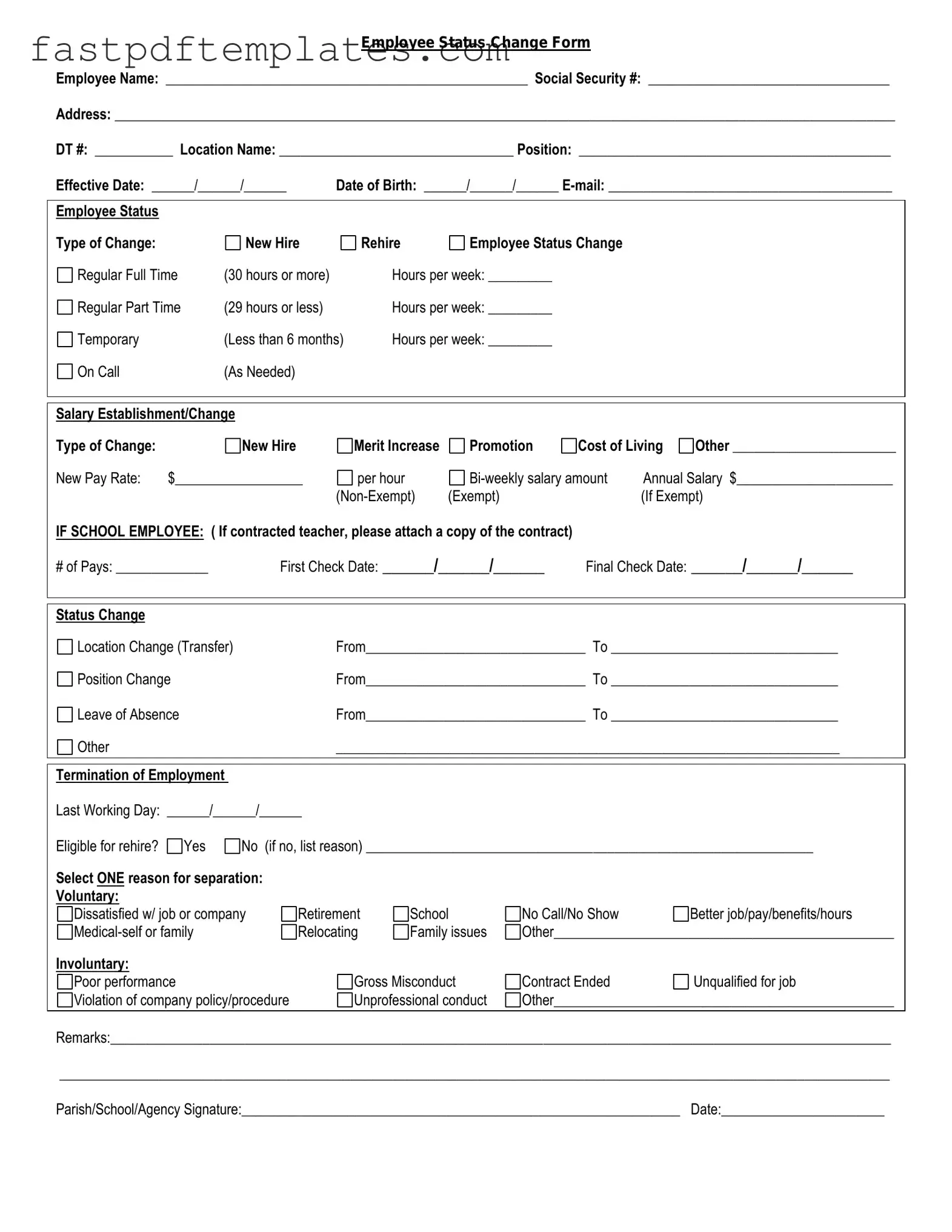The Employee Status Change form is similar to the Job Offer Letter. Both documents serve to formalize changes in employment status, whether it be a new hire or a promotion. The Job Offer Letter outlines the terms of employment, including job title, salary, and start date, while the Employee Status Change form captures updates to an existing employee’s role, compensation, or benefits. Both documents require signatures to indicate acceptance and acknowledgment of the terms presented.
Another document akin to the Employee Status Change form is the Promotion Letter. This letter is used to communicate an employee’s advancement within the company. It details the new position, responsibilities, and any changes in salary or benefits. Similar to the Employee Status Change form, it requires the employee’s acknowledgment and acceptance of the new terms. Both documents are essential for maintaining clear communication regarding an employee's career progression.
The Transfer Request Form also shares similarities with the Employee Status Change form. This form is used when an employee wishes to move from one department or location to another within the organization. Like the Employee Status Change form, it requires information about the employee’s current position and the desired new position. Both documents help ensure that the transition is documented and approved by relevant parties, facilitating a smooth change in employment status.
The Termination Notice is another document that parallels the Employee Status Change form. While the latter addresses positive changes in employment status, the Termination Notice communicates the end of an employee’s tenure with the organization. Both documents require careful attention to detail and often involve multiple approvals. They serve to clarify the terms of the employment relationship, whether it is ending or evolving.
The Leave of Absence Request form is also similar in that it pertains to changes in an employee's status, albeit temporarily. This form allows employees to request time off for various reasons, such as medical leave or personal matters. Like the Employee Status Change form, it requires the employee to provide specific information and may need approval from management. Both documents are crucial for managing workforce changes and ensuring compliance with company policies.
Finally, the Performance Review form can be compared to the Employee Status Change form. While primarily focused on evaluating an employee’s job performance, it often leads to changes in status, such as promotions or raises. Both forms document important information about the employee’s role and contributions to the organization. They serve as official records that can influence future employment decisions and clarify expectations moving forward.

